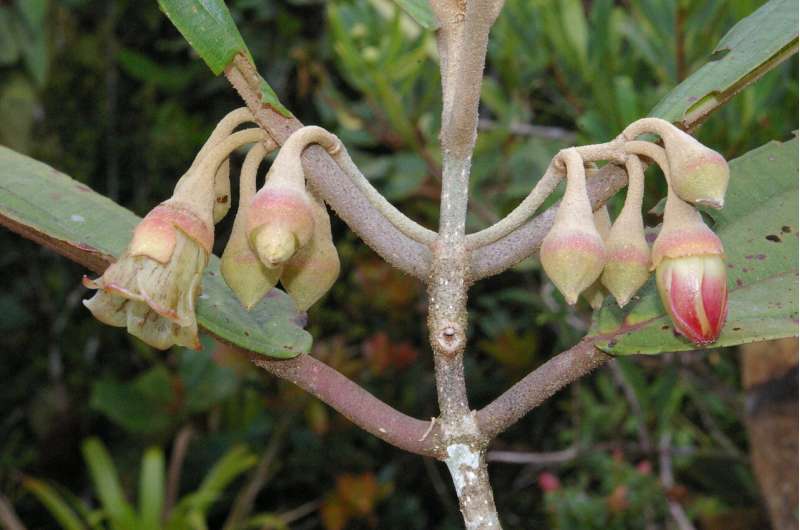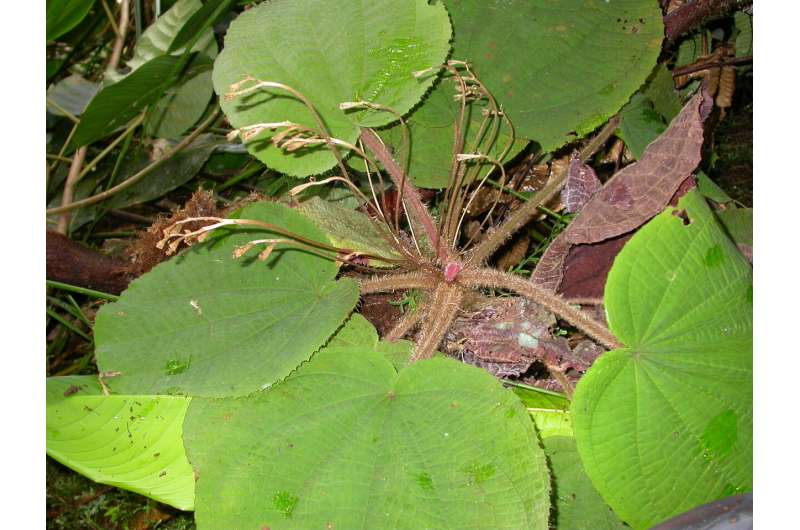Study shows Latin America twice as rich in plant species as tropical Africa

Latin America is more than twice as rich in plant species as tropical Africa and is home to a third of the world's biodiversity, a new paper published today in Science Advances confirms.
While it has long been understood that Latin America is richer in plant species than tropical Africa, the paper quantifies that difference for the first time by providing a precise number of vascular plant species in the Afrotropical Region and Latin America.
With tropical forests being removed at alarming rates, and likely to nearly disappear by the end of the century, this information can help focus conservation efforts in areas with the greatest biodiversity while there is still time do so.
Missouri Botanical Garden President Emeritus Peter Raven coauthored the paper, "The distribution of biodiversity richness in the tropics," along with Garden Researchers Roy Gereau, Peter Phillipson, and Carmen Ulloa, Clinton N. Jenkins of the Florida International University, and Cyrille Chatelain of the Geneva Botanical Garden.
The paper compares the numbers of vascular plant species in the Afrotropical Region (Africa south of the Sahara plus Madagascar) and Latin America using the Vascular Plants of Americas website developed by the Garden, the African Plant Database, a collaboration among the South African National Biodiversity Institute, the Geneva Botanical Garden and the Missouri Botanical Garden, and the Catalogue of the Plants of Madagascar developed at the Garden and housed on its Tropicos database. Based on more approximate but still reliable numbers, Tropical Asia is as rich per area in plant species as Latin America, but considerably smaller.

Comparing the databases confirmed that Latin America is more than twice as rich in plant species, in a smaller area, than tropical Africa and that new species are being discovered in Latin America much more rapidly. This information, combined with the best available information from relatively well-known groups of animals, makes it clear that Latin America is home to at least a third of the world's total biodiversity.
The paper provides essential baseline data for understanding the varying levels of biodiversity in the major tropical areas of the world and allows scientists to estimate the true species numbers that exist in these areas.
This information is especially essential as the rapid destruction of ecosystems throughout the tropics mean it will be difficult to collect additional data. It can be used to focus conservation efforts on major continental areas and allows for even greater focus on particular areas that are the richest in species. For instance, the study found that the richest areas in total species and undescribed species are the tropical Andes and Southeast Asia, which accords with other recent reports for New Guinea.
More information: "The distribution of biodiversity richness in the tropics" Science Advances (2020). DOI: 10.1126/sciadv.abc6228
Journal information: Science Advances
Provided by Missouri Botanical Garden





















